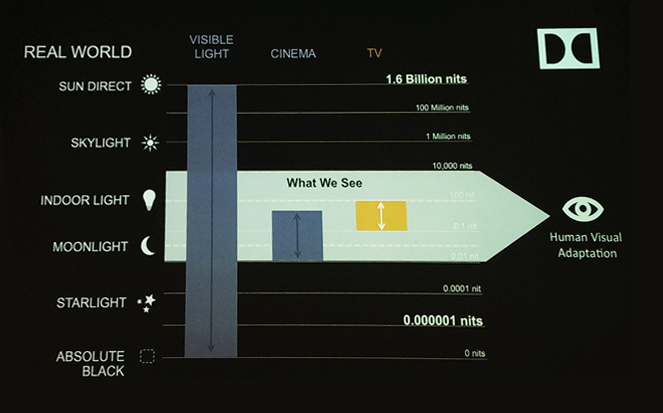The resolution craze seems to be insatiable. From 480p SD to 720p to “Full” 1080p HD… there seems to be no end to the pixel pushing hype. Consumers and corporate marketers are driving a new push to sell Ultra 4K televisions at a time when broadcasters and local media markets have just finally settled into their 1080 HD equipment and workflows. Netflix is streaming 4K movies now. Apple has released an iMac computer with a 5K screen and their latest Mac Pro is configured to handle multiple screens of 4K video. 4K televisions are dropping in price rapidly and the market seems to be warming to another format change. 3D is still in the conversation as well as higher frame rates (for sporting events and certain movie applications).
And now the subject of 8K is starting to enter the discussion. So it’s really time to stop and evaluate the priorities. Do we really want 8K? Or do we need higher quality with the resolutions we already have? There’s a great article over at Red Shark on this very topic… take a look.
Most people will believe that higher resolutions are naturally the way to go… but you won’t really notice a difference at home unless you have a very large TV. Granted, they have their own agenda, but the people at Dolby are pretty smart and here is their take:
We can’t escape the inevitability of 4K (or possibly 8K). Everything will support the next generation TV technology at some point. The question is, will it be worth the hassle of upgrading an entire industry for more pixels. If Dolby Vision can get in on that upgrade, you might actually feel much better about your next TV purchase. http://blog.dolby.com/2014/04/introduction-dolby-vision/
I think they are right. As someone in content creation, I’m not excited about upgrading my equipment all over again (though we already have the new Mac Pro and the workflow adjustments won’t be too bad). One day we’ll all look at screens that are so high in resolution, we won’t be able to tell if it’s a window or a screen (think about the hotel room in Hunger Games – a giant screen that looked like a window). But before that happens, we need to make sure the pixels we already have look as real as possible. We’ve pushed pretty far into higher resolutions and the technology is already in place to go farther, but I think we need to make sure that the colors are right, that the blacks look truly black and that the differences between dark and bright areas reflect reality in a more convincing way. TV’s today are really bad at this. Look at this chart from a recent Dolby presentation:
The little orange box shows just how small a slice of visible light the current TV’s are able to reproduce. Can you imagine the difference it would make to have displays capable of reproducing double or even triple their range of light?! The difference would be like night and day…
Read more here:
http://www.wired.com/2014/01/dolby-display-4k/
http://www.redsharknews.com/technology/item/2124-do-we-want-more-pixels-than-4k-no-what-we-want-is-better-pixels

